by Naomi L. | March 8, 2017 | Blog, Creative Writing, Featured |
Happy Women’s Day! Because face it, world: you couldn’t exist without us. March has been designated National Women’s History Month, so to continue the theme of celebrating women on my blog, I’ve compiled a list of some of my favorite female characters ever! There are tons of amazing characters to choose from, of course; it was quite a challenge just to narrow the list down to fit in one blog post!
So to celebrate Women’s Day, here are six awesome female characters that I believe every girl can look up to as a potential role model. Enjoy, and keep being awesome, ladies!
Note: I was originally going to include a couple of my favorite Disney princesses in this list, but the post was already becoming too long. Instead, they’ll be the subject of another post coming soon!
1) Hermione Granger (The Harry Potter series)
 Hands down, Hermione Granger is my favorite female character ever written. Growing up reading all seven Harry Potter books, I witnessed this beloved character’s transformation from a naïve know-it-all girl to a brave and intelligent young woman. I always admired Hermione for how much she loved reading, and even more so for how skillful she was at applying her knowledge to real-world situations. Her brains and dedication to her studies may have qualified her for Ravenclaw, but her courage and determination prove she was always a Gryffindor at heart! And let’s be honest: this girl was the real hero of the story all along. Do you think Harry and his friends could have accomplished as much as they did throughout the series if Hermione didn’t read so much? It just goes to show: never underestimate the value of intelligence and a good education, because they’re the most powerful tools to save the world!
Hands down, Hermione Granger is my favorite female character ever written. Growing up reading all seven Harry Potter books, I witnessed this beloved character’s transformation from a naïve know-it-all girl to a brave and intelligent young woman. I always admired Hermione for how much she loved reading, and even more so for how skillful she was at applying her knowledge to real-world situations. Her brains and dedication to her studies may have qualified her for Ravenclaw, but her courage and determination prove she was always a Gryffindor at heart! And let’s be honest: this girl was the real hero of the story all along. Do you think Harry and his friends could have accomplished as much as they did throughout the series if Hermione didn’t read so much? It just goes to show: never underestimate the value of intelligence and a good education, because they’re the most powerful tools to save the world!
2) Elizabeth Bennet (Pride and Prejudice)
The heroine of Pride and Prejudice is Elizabeth Bennet. She is one of the greatest and most complex characters ever written, not that you would know.
– Kathleen Kelly, You’ve Got Mail (1998)
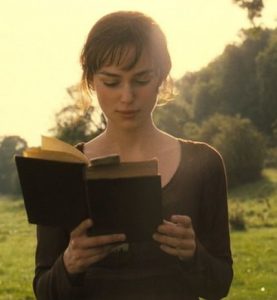 After finally reading Pride and Prejudice for the first time last year, I can honestly say it’s one of the best books I’ve ever read, thanks in no small part to the fascinating complexity of its female protagonist. Elizabeth Bennet is a remarkable character who, like the author who created her, could easily be seen as very much ahead of her time. While many of the women around her are inclined to marry for convenience (her best friend included), Elizabeth is determined to marry for love. She is clever and quick-witted in conversation without compromising her integrity to impress anyone, which wins her the favor of her proud-yet-good-natured soulmate, Mr. Darcy. Lizzy is observant enough to make quick analyses of people’s characters, yet ultimately proves her real intelligence by overcoming the prejudice that almost costs her true love and a lifetime of happiness.
After finally reading Pride and Prejudice for the first time last year, I can honestly say it’s one of the best books I’ve ever read, thanks in no small part to the fascinating complexity of its female protagonist. Elizabeth Bennet is a remarkable character who, like the author who created her, could easily be seen as very much ahead of her time. While many of the women around her are inclined to marry for convenience (her best friend included), Elizabeth is determined to marry for love. She is clever and quick-witted in conversation without compromising her integrity to impress anyone, which wins her the favor of her proud-yet-good-natured soulmate, Mr. Darcy. Lizzy is observant enough to make quick analyses of people’s characters, yet ultimately proves her real intelligence by overcoming the prejudice that almost costs her true love and a lifetime of happiness.
Smart yet proud, charming yet headstrong, idealistic about love yet critical about people, Elizabeth Bennet is the epitome of a multidimensional character and a powerful role model for women even today. So to all the clever young ladies who can relate, never feel like you don’t deserve to be appreciated for your intelligence. Keep on channeling the Elizabeth Bennet in you, and you may find your Mr. Darcy is just around the corner!
3) Juliet Capulet (Romeo & Juliet)
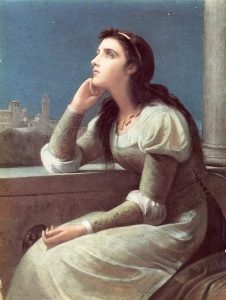 This may seem a strange choice to some, but hear me out. First of all, no, I am not condoning teen suicide nor the total abandonment of family in favor of romance. I know Romeo and Juliet are often criticized as a couple of stupid kids who get six people killed in four days (which is so untrue it’s not even funny), but I’m not trying to praise their totally normal recklessness or their totally justified attempts to break out of a broken system. No, what I really find so admirable about Juliet is her determination to take control of her life in the face of an overbearing patriarchal society.
This may seem a strange choice to some, but hear me out. First of all, no, I am not condoning teen suicide nor the total abandonment of family in favor of romance. I know Romeo and Juliet are often criticized as a couple of stupid kids who get six people killed in four days (which is so untrue it’s not even funny), but I’m not trying to praise their totally normal recklessness or their totally justified attempts to break out of a broken system. No, what I really find so admirable about Juliet is her determination to take control of her life in the face of an overbearing patriarchal society.
Remember that Romeo & Juliet takes place during a time when men literally controlled everything, including the women in their lives, which really makes Juliet’s triumphs all the more inspiring. Her family is eager to have her married at the age of thirteen, a thought that has barely even crossed her mind once before the night of the Capulet Ball. She politely agrees to consider Paris as a potential husband while cleverly avoiding committing to him. When it becomes clear she won’t be able to break the rules that bind her to marriage, she bends them to her own wishes by choosing love (Romeo) over convenience (Paris). She handles the aftermath of Tybalt’s death with a much clearer head than Romeo (who at one point tries to stab himself out of guilt), sacrifices her social status and security for love and freedom, and defies the fear that would send her back to her unfulfilling life by (painfully) following her beloved into eternity. Say what you will about Juliet and her Romeo, but you have to admit this girl is a fighter to the very end, a woman who knows exactly what she wants and who will do whatever it takes to have the final say on how she lives her life.
Of course, if you want to see this taken a step further, you should check out the anime series Romeo x Juliet, in which a 16-year-old Juliet Capulet leads a revolution and masquerades as a sword-wielding vigilante known as the Red Whirlwind. Now that’s a strong woman!

Juliet, rightful ruler of Neo Verona, prepares to lead the Capulet rebellion against the evil Prince Montague (Romeo x Juliet , 2007)
4) Jo March (Little Women)
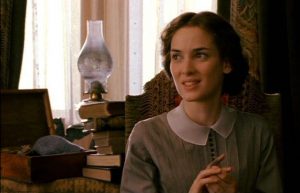 Another book I finally got around to reading last year is Little Women, a recommendation from my mother that I absolutely loved. She told me going in that I would strongly identify with Jo, and being a tomboyish bookworm and writer, it didn’t take me long to see why.
Another book I finally got around to reading last year is Little Women, a recommendation from my mother that I absolutely loved. She told me going in that I would strongly identify with Jo, and being a tomboyish bookworm and writer, it didn’t take me long to see why.
At the age of fifteen in 1800s America, Josephine March is a classic example of a girl who refuses to conform to the expectations society has of her. While her sisters live up to a more feminine image, Jo proves herself independent by constantly rebelling against the limitations placed on women. She reads books incessantly, writes and publishes stories, assumes the male roles in the plays she composes, and openly dismisses the idea of romance in favor of holding her family together. She may not embody the ideals of every woman today, but (at least in the first books of the series) Jo does serve as a model of the independent spirit that all women potentially have inside them!
5) Katniss Everdeen (The Hunger Games trilogy)
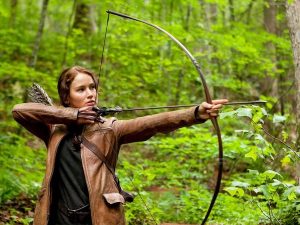 I’ve watched all four Hunger Games movies and recently finished reading the first book in the trilogy, and I have to say that I admired the story’s protagonist from start to finish. Forced to endure a lifetime of hardship and more than one battle to the death from the age of sixteen, Katniss Everdeen is an embodiment of strength, tenacity, and survivalist cunning, not to mention the lengths one will go to for the love of family. After losing her father to a mining accident and watching her mother fade away into depression, this girl took on the role of head of her household and sole provider for her family at the age of eleven and shouldered that responsibility through her entire teenage life. That’s not an easy feat for anyone, especially someone who has to survive two Hunger Games and a revolution along the way. Still, Katniss is a fighter all the way to the end of the story, and stands as a symbol for girls everywhere to never give up on defending what they believe in!
I’ve watched all four Hunger Games movies and recently finished reading the first book in the trilogy, and I have to say that I admired the story’s protagonist from start to finish. Forced to endure a lifetime of hardship and more than one battle to the death from the age of sixteen, Katniss Everdeen is an embodiment of strength, tenacity, and survivalist cunning, not to mention the lengths one will go to for the love of family. After losing her father to a mining accident and watching her mother fade away into depression, this girl took on the role of head of her household and sole provider for her family at the age of eleven and shouldered that responsibility through her entire teenage life. That’s not an easy feat for anyone, especially someone who has to survive two Hunger Games and a revolution along the way. Still, Katniss is a fighter all the way to the end of the story, and stands as a symbol for girls everywhere to never give up on defending what they believe in!
6) Imperator Furiosa (Mad Max: Fury Road)
 Heck yeah, I’ll say it: I loved Mad Max: Fury Road! Who didn’t, right? Remember how everyone was gushing about it two years ago and it took home six Academy Awards out of ten nominations? It’s already a great movie for its incredible action sequences and wildly thrilling screenplay, but what really made the story so enjoyable for me was the sheer awesomeness of its main character, Imperator Furiosa.
Heck yeah, I’ll say it: I loved Mad Max: Fury Road! Who didn’t, right? Remember how everyone was gushing about it two years ago and it took home six Academy Awards out of ten nominations? It’s already a great movie for its incredible action sequences and wildly thrilling screenplay, but what really made the story so enjoyable for me was the sheer awesomeness of its main character, Imperator Furiosa.
Intent on rescuing the Five Wives of the film’s villain, Immortan Joe, Furiosa sets off on a daring quest across a post-apocalyptic wasteland to deliver them to a promised sanctuary (while Max, in his usual fashion, ends up coming along for the ride). This hardcore woman drives a war rig through the desert, uses great resourcefulness to evade her pursuers, and fights off countless enemies with an impressive arsenal of weapons. Oh, and she does it all with a prosthetic arm. With her endless bravery and cleverness, Imperator Furiosa is a model of strength and skill for women and people with disabilities alike. It doesn’t get more badass than that!
Who are the female characters you most admire? What other fictional female role models would you add to this list?
by Naomi L. | November 9, 2016 | Blog, Creative Writing, Featured |
Rhetoric: the beautiful art of persuasive speaking and writing that all ambitious people strive to master. It’s a powerful tool for success; within a social and communicative species like ours, so many goals can be achieved simply through the use of effective speech and composition. English is rife with handy rhetorical devices, and while you work on that NaNoWriMo novel, you should consider how to use language to its greatest potential, as much among your characters as with your audience.
So for your reference, here is a list of six popular rhetorical devices, complete with explanations and examples for how to use them. Enjoy!
1) Analogies are as easy as pie.
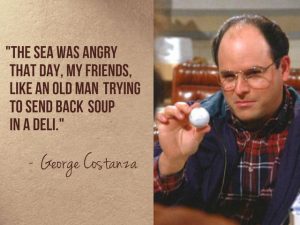
The sea was angry that day, my friends, like an old man trying to send back soup in a deli. – George Costanza, Seinfeld (Season 5, Episode 14 – The Marine Biologist)
(Image source: Playbuzz)
The analogy is one of the first rhetorical devices we learn to use in school. The basic formula is simple: take two similar ideas and connect them with “as” or “like” (which gives you a simile). They can also be more complex, making use of similes and metaphors to strengthen a comparison in the minds of readers and listeners, thus leaving a lasting impression on the audience.
Analogies are particularly useful for making complex ideas accessible by comparing unfamiliar concepts with familiar ones. Aside from providing simple explanations, they can also be used to create vivid images that engage the audience, such as “autumn leaves falling like golden rain” or “a young lady as beautiful and delicate as a rose”. Try not to use too many analogies at once, though; constantly comparing one image to another will not only get tiresome quickly, but could give the impression of unoriginality, especially if you’re comparing your work to someone else’s. Don’t make your stories as average as the next person’s!
2) Hyperbole is the greatest rhetorical device ever created!
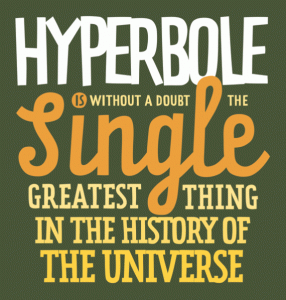 There’s nothing like exaggeration to get a point across. Who among us hasn’t shared our experiences of “the greatest thing ever”, “the worst day in history”, or “the most fun I’ve ever had in my entire life”? Hyperbole is a common device for creating emphasis, as exaggeration tends to have a great impact on an audience’s perceptions of a given description.
There’s nothing like exaggeration to get a point across. Who among us hasn’t shared our experiences of “the greatest thing ever”, “the worst day in history”, or “the most fun I’ve ever had in my entire life”? Hyperbole is a common device for creating emphasis, as exaggeration tends to have a great impact on an audience’s perceptions of a given description.
If you think about it, it’s funny how we’re inclined to exaggerate so often. After all, nobody literally “dies of embarrassment”, bags don’t literally “weigh a ton”, and friends don’t literally “go forever without seeing each other”. Yet we excuse this lack of literal sense in favor of the bolder imagery that fascinates us so, as if reaching to the limits of our imagination and beyond is simply second nature.
While it shouldn’t be used in excess, hyperbole is a good addition to any conversation that calls for dramatic emphasis. Have your characters use this device to add an informal or amusing tone to your dialogue, while in narrative you can use it to demonstrate intensity or create contrasts with normal descriptions. Use it wisely, and the hyperbole may just help you write the best stories ever!
3) Metaphors are a piece of cake.
All the world’s a stage,
And all the men and women merely players.
– William Shakespeare, As You Like It
Ah, metaphors: the celebrated heroes of poetic language. This is an especially popular device in rhetoric, using figurative speech to make strong comparisons where literal expressions would fall short. A close cousin of the simile and building block of the full analogy, the metaphor is an effective tool for constructing imagery that appeals to the audience’s imagination and draws them further into a story. Why say a soldier is “brave” when you can call him a “lion”, or say that a sound is “sweet” when you can call it “music to one’s ears”?
Metaphors have become so pervasive in modern language that we don’t even realize how heavily we rely on them in everyday speech. We suffer “broken hearts”, laugh “our heads off”, cry “rivers of tears”, and “bottle up” our anger. We’re “early birds” and “night owls”, “open books” and “loose cannons”, “black sheep” and “couch potatoes”, all lost in a “sea of faces” in the great “melting pot” that is our world. Is it even possible to speak completely literally anymore? I can only imagine how hard (and fun) it must have been to write Drax’s lines for Guardians of the Galaxy!
The metaphor is useful for creating impact in a story, so long as it’s used sparingly and with good timing. If you find your writing is lacking some flair, a well-placed metaphor, whether short and sweet or long and complex, may be just the thing to “brighten up” your story and “paint a colorful picture” in your readers’ minds!
4) Oxymorons are stupidly brilliant!
And faith unfaithful kept him falsely true.
– Idylls of the King (Alfred Tennyson, 1859–1885)
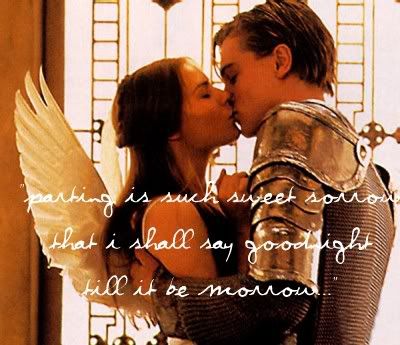
Good night, good night! Parting is such sweet sorrow / That I shall say good night till it be morrow. – Juliet Capulet (Romeo & Juliet, 2.2.185–86)
(Screencap source: Romeo + Juliet, 1996)
This is one of my favorite rhetorical devices, for even though I don’t use it often myself, I enjoy the comical irony of using opposites to create a coherent phrase. The oxymoron is a figure of speech formed by combining contradictory terms, which often leads to humorous results: “jumbo shrimp”, “found missing”, “act naturally”, and so on. Some are even taken for granted as commonplace expressions, such as “virtual reality” and “science fiction”. And what horror fan could forget the classic “living dead”?
The beauty of the oxymoron is that it can just as easily slip by unnoticed as it can make us pause to think when pointed out. In rhetoric, this device can be used to create a paradox and draw attention to a contradiction, such as in Romeo’s criticism of the contrasts of love in Shakespeare’s Romeo & Juliet:
O heavy lightness, serious vanity,
Misshapen chaos of well-seeming forms!
Feather of lead, bright smoke, cold fire, sick health,
Still-waking sleep, that is not what it is!
– Romeo Montague (Romeo & Juliet, 1.1.184–87)
Overall, oxymorons are good for creating dramatic effect in poetry and in prose. They’re also popular as satirical devices, and can make great additions to a piece of humorous writing. So the next time you feel stuck writing comedy, why not try making opposites attract? You may be able to create some “seriously funny” works!
5) I’m not saying paralipsis is an evasive maneuver, but…
 This one was recently featured as a Word of the Week on my blog. It’s common to hear people use such phrases as “I’m not saying”, “not to mention”, and “needless to say”, only to immediately follow them up with a piece of information they just said they wouldn’t talk about. This is known as paralipsis, an ironic way to draw attention to a subject by explicitly stating you won’t mention it.
This one was recently featured as a Word of the Week on my blog. It’s common to hear people use such phrases as “I’m not saying”, “not to mention”, and “needless to say”, only to immediately follow them up with a piece of information they just said they wouldn’t talk about. This is known as paralipsis, an ironic way to draw attention to a subject by explicitly stating you won’t mention it.
A relatively colloquial device, paralipsis is used most effectively in speech rather than in writing, making it a good choice for character dialogue. One of the most notable examples in literature (as pointed out by Mike of M.C. Tuggle, Writer) is Mark Antony’s speech in Shakespeare’s Julius Caesar, in which Antony brilliantly uses this device to turn the crowd against Brutus and the other conspirators:
Have patience, gentle friends, I must not read it;
It is not meet you know how Caesar loved you.
You are not wood, you are not stones, but men;
And, being men, bearing the will of Caesar,
It will inflame you, it will make you mad.
‘Tis good you know not that you are his heirs;
For if you should, O, what would come of it!
– Mark Antony (Julius Caesar, 3.2.139–45)
In rhetoric, paralipsis has several uses: to indirectly point something out, to make a passive-aggressive comment, to criticize someone without being held accountable, or to explain something while politely avoiding a suggestion of ignorance (or, alternatively, to make a sarcastic comment about the audience’s ignorance). Though it should be used carefully, this is a highly effective device that can make for some exceptionally persuasive speech. I’m not saying it’ll help you reach or even surpass the level of your favorite authors, but learning to use paralipsis well will definitely improve your proficiency as a writer!
6) I love when people take sarcasm seriously.
Irony in its sharpest form, sarcasm is hailed as one of the most beloved tools in the comedic arsenal – so much so, that it’s become nearly impossible not to hear it in some form or other in everyday speech. Sarcasm is basically the use of wit to make a point, typically in a bitter way that conveys contempt. This device comes in many flavors, including deadpan, self-deprecating, manic, and even polite. It’s used to amusingly draw attention to the obvious, to mock oneself or others, or simply as a coping mechanism to make the frustrations of life a little more bearable. I know I’ve had those days that I couldn’t survive without a little sarcasm to tide me over!

Leonard has to clue Sheldon in on Penny’s sarcasm (The Big Bang Theory: Season 1, Episode 2 – The Big Bran Hypothesis)
(Image source: Tumblr)
Given its acidic nature, sarcasm is best exercised with caution. Like most humor techniques, it’s hard to teach because each person uses it differently and even harder to master because not everyone understands it, but sarcasm in particular is worth the effort as it’s a strong indicator of the writer and the readers’ intelligence. Use it in dialogue to demonstrate a character’s sharp wit or occasionally in narrative to indirectly criticize people and society, and if you must use it to address your readers, at least try not to be too offensive and alienate an audience who have no sense of humor. Or, you know, just do whatever you want. Why give a damn what the rest of the world thinks?
What are your thoughts on these rhetorical devices? Any other favorites you would add to this list?
by Naomi L. | October 12, 2016 | Blog, Creative Writing, Featured |
Yes, I know I’ve been writing a lot about my recent graduate school achievement lately and it might be getting tiresome to my regular readers. Don’t worry; I promise it’ll only go on for like, two more months (just kidding!). In all seriousness, though, my Master’s thesis did teach me a lot about writing, as much in science as in general, and since it’s been such an insightful experience, I thought it would be fun to share what I learned on my creative writing blog.
So on that note, here are five lessons I learned from writing my Master’s thesis. Enjoy!
1) A thesis will never, ever be perfect. Ever.

“Piled Higher and Deeper” by Jorge Cham
www.phdcomics.com
This point is worth mentioning first as it applies to all types of writing. Seasoned writers all know that a huge part of writing is rewriting, and that arguably holds true for nonfiction more than any other genre. One of the most important lessons I learned through my years in college and grad school is that scientists can’t hope to turn out quality papers and articles without rigorous research and engaging discussions of their results, but the challenge of writing about science is that science is constantly changing. New research is being published every day and new ideas are emerging every hour, making it nearly impossible to keep drafts of a paper or thesis updated to the minute.
But an endless stream of new research isn’t the only challenge of academic writing. Perfectionism has long been a barrier to productivity, as any writer with a strong inner critic can attest. You can strive to cite every relevant reference, cover every possible discussion point, and smooth out every error to the tiniest misplaced comma, but at some point you just have to accept that your paper/article/thesis will never be flawless by the time you submit it for publication. Don’t sweat it; that’s what editors are paid for!
Writing my thesis definitely pushed my limits in academic literacy and technical perfectionism. Tackling both these obstacles every day, it’s a wonder I ever even finished the first draft!
2) Scientific writing is not the same as literary writing.
Most of my writing takes the form of stories and poetry, which presented a challenge for me when it came to writing the main chapter of my thesis. Despite constant reminders to myself of the differences between scientific and literary composition, more than once I found myself falling into old creative writing habits, including, but not limited to:
- omitting important explanations in the introduction,
- using layman’s terms in place of scientific terms,
- lampshading flaws and shortcomings in the study (yes, really), and
- building suspense to the “grand reveal” of my results (which I still think was justified given that I discovered we were dealing with a different species than we initially thought).

“Piled Higher and Deeper” by Jorge Cham
www.phdcomics.com
Honestly, my artistic side wants to turn everything I learned throughout my Master’s program into a novel, but my scientific side insists on being reasonable (i.e. following my professor and colleagues’ directions) and sticking to hard facts and logical discussions without embellishing the text with my storytelling voice. If this whole endeavor wasn’t challenging enough to begin with, these dueling voices in my head made the final stretch one heck of a ride!
3) Between the time you start your thesis and the time you defend it, your project will change at least a dozen times.
And if you’re lucky, that’s the most it will change. I was accepted into my Master’s program with a proposal for a phylogeographic study of four reef fish species spanning the Atlantic Ocean. By the time I defended my thesis, the project had been narrowed down to one species in Brazil, which later turned into a study of the entire genus across the Atlantic and part of the Pacific, and had been expanded from a purely genetic analysis to include an ecological component about the fish’s feeding activity. Now try reading back this paragraph a few times fast and you may get a sense of the headaches I went through over the last few years.

“Piled Higher and Deeper” by Jorge Cham
www.phdcomics.com
Still, exploring different projects is part of the grad school experience (or so I hear), and it was certainly an educational endeavor. Though more than a little frustrating at times, it did offer an insight into the life of a scientist: methods will fail, new ideas will emerge, projects will change, and in the end, you’ll find yourself arduously studying a subject you’d never even considered when you started. New grad students, be warned: until you finally defend your thesis/dissertation, you’re in for an academic rollercoaster ride!
4) Coauthoring is both easier and harder than writing alone.
Speaking as a writer who prefers to work solo, I’ve found there are advantages and disadvantages to collaborating with other authors on an article. On the one hand, different perspectives mean different ideas and contributions, which more often than not result in a well-rounded study and, consequently, a high-quality paper. On the other hand, opinions between authors can (and will) conflict during the writing process, which will make turning out the final draft all the more challenging.
As the lead author of a paper with five names to its title (and counting), I’m in charge of writing the text and integrating the other authors’ notes and revisions into each draft. The main advantage of this is that each researcher has their own area of expertise, so I’ve gotten plenty of help as much for the genetic part of the study as for the ecological part. However, some points in the discussion tend to have opposite approaches, and sure enough, I’ve rewritten some paragraphs a few times over after disagreements arose between my coauthors about how best to discuss the results.
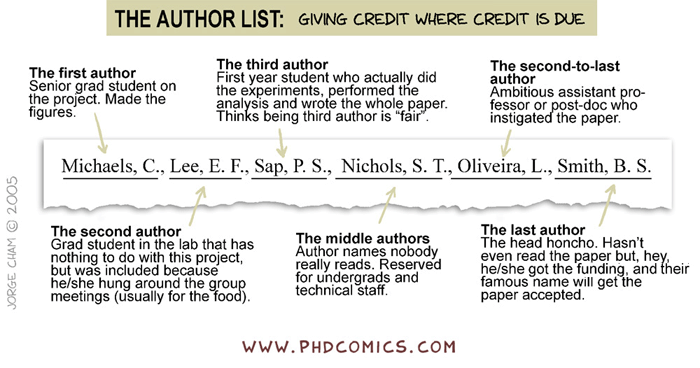
“Piled Higher and Deeper” by Jorge Cham
www.phdcomics.com
Finding a balance hasn’t always been easy, but since all my solo writing experience has been related to fiction, I’m glad to have so much extra input on this project. All that matters is that the final paper is worthy of publication!
5) Successfully completing and defending a thesis brings an incredible sense of accomplishment.
At the risk of sounding cheesy, words cannot describe the elation I felt while standing before the audience at my defense and thanking them for watching the presentation I had just concluded. In that moment, all my hard work, perseverance, and bouts of stress, anxiety, and tears had finally been validated. I was so proud of myself for having made it to that point that I smiled through the whole evaluation and Q&A segment that followed. It was one of the greatest successes of my life, and though it isn’t a bestselling novel, the thesis I toiled over for a year and a half will always hold a special place among my most treasured pieces of writing.
The only question now is whether this sense of achievement is enough motivation to take on double the hard work in pursuit of a doctorate…
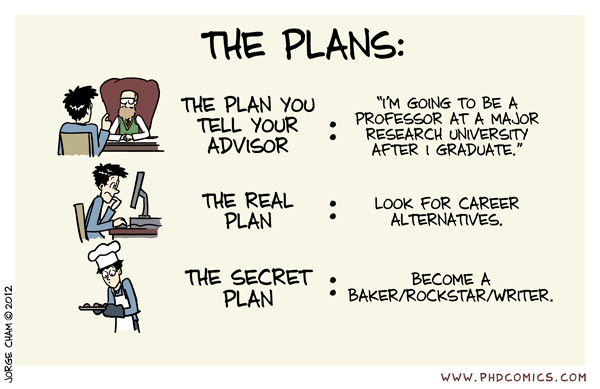
“Piled Higher and Deeper” by Jorge Cham
www.phdcomics.com
What about you? Do you have any college or grad school experiences to share? How have they influenced your writing?
All images in this post are from the comic series “Piled Higher and Deeper” (a.k.a. PHD Comics) by Jorge Cham; I own nothing! For a hilarious insight into life (or lack thereof) in academia, I highly recommend you check out his work!
by Naomi L. | October 5, 2016 | Blog, Creative Writing, Featured |
Welcome to the first week of October, or as it’s come to be known here on The Wolfe’s (Writing) Den, “Romeo & Juliet Week”! Yes, every year around this time, I like to share a post about my favorite love story: since I started blogging in 2013, I’ve covered five points that are commonly missed, the reasons this is such a great love story, and a book review of Romeo & Juliet / West Side Story.
Now I’d like to continue the trend this year with a post about some of the lessons we can all learn from Shakespeare’s timeless romance. So on that note, here are five lessons about love in Romeo & Juliet! Enjoy!
1) Love is blind.

Romeo and Juliet meet at the Capulet Ball and fall in love at first sight (Romeo & Juliet, 2013)
This is arguably one of the most famous lessons taken from Romeo & Juliet (second to, if not tied with, the fourth point on this list). The city of Verona is torn by a feud between two influential households, “both alike in dignity”, yet against all odds, a pair of teenagers from either family find each other and fall in love at first sight. Initially blind to the fact they’re supposed to be enemies, they’re understandably shocked and disappointed after learning each other’s names, but still strive to be together in spite of the hatred that threatens to keep them apart.
Romeo and Juliet’s decision to set aside their differences in favor of romance proves true the famous idiom “love is blind”, and this has become a common theme in many adaptations. A well-known example is the musical West Side Story, in which a Polish-American boy and a Puerto-Rican girl fall in love against a backdrop of racial intolerance and street gang warfare. If there’s one lesson common to all versions of this story, it’s that love is and always will be universal. Be it in social position, race, or anything else, wherever fear and hatred create barriers, love will keep on tearing them down. Which goes to show…
2) Love brings out the best in us.
Too many people focus on the tragic themes in Romeo & Juliet without giving enough credit to the positive points. It’s easy to dismiss the title characters as naïve and misguided teenagers throughout this four-day course of events, but it’s important to keep in mind that they’re very different people by the end of the story than they were in the beginning.

Romeo and Juliet profess their love for each other over Juliet’s balcony (Romeo and Juliet, 1968)
Remember that before Romeo meets Juliet, he quite possibly suffers from depression due to perceived parental neglect and a hopeless infatuation with a young lady named Rosaline. Meanwhile, Juliet before Romeo is the picture of an innocent and sheltered child, pressured by her parents into a marriage of convenience with virtually no freedom to pursue happiness on her own. As I’ve noted before, Romeo & Juliet can be considered a coming-of-age story because after these teenagers cross paths, they quickly blossom into more mature people: Romeo becomes a deeply passionate and devoted lover, Juliet becomes a strong and confident woman, and both are willing to sacrifice everything for the love that makes them the best possible versions of themselves.
Now you may argue that Romeo wasn’t all good inside because he murdered Tybalt, but don’t forget that this act is brought about by his anger over Tybalt murdering his friend Mercutio and has nothing to do with Romeo’s marriage to Juliet. It’s hatred that brings out the worst in this story’s characters, while love only ever brings them happiness and hope for a peaceful future, at least to the ones who are willing to seek it.
Unfortunately, as these young lovers quickly learn, love has a tragic side as well…
3) Life without love is not worth living.
Our idealistic young heroes clearly believed their story was destined to last a lifetime, but sadly, as we all know, it was not to be. In the beginning of Act V, Romeo’s entire world is shattered when he learns that his beloved Juliet is dead (which we know is only part of Friar Laurence’s master plan, but this poor kid missed the memo). Heartbroken, it takes him about a second to decide his next course of action: to drink poison and die at his wife’s side.
Melodramatic, much? Not for someone in Romeo’s shoes. Don’t forget, in the course of a day, this teenage boy lost his best friend, his family, his home, and his social standing, and only narrowly escaped Verona with his life. Juliet was his last ray of hope, and now suddenly, she’s gone too. What else is a grieving young lover, with nothing left to live for, to do but follow his beloved into the afterlife?
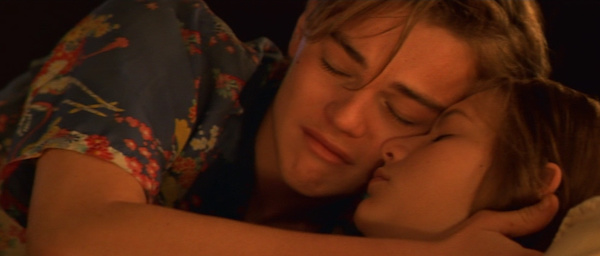
Romeo mistakenly believes Juliet is dead and resolves to die at her side (Romeo + Juliet, 1996)
Romeo’s decision to kill himself only after losing Juliet can be seen as a testament to how much she truly means to him. Even after losing everything else, he holds on to the hope of a future with her, and only gives up on life after that one hope is snatched away. Juliet, in turn, clearly loves Romeo just as deeply, as it also takes her literally a second to choose eternity in death with him over a miserable life alone. The star-crossed lovers are faced with an unthinkable choice in the play’s final scene, yet neither one of them hesitates to die for the other because they already know in their hearts the one truth no one else in the story seems to understand: life without love is not worth living.
Which leads us to the next lesson…
4) Love stories don’t always end happily.
Is there any tragedy in all of literature more famous than the plight of Shakespeare’s star-crossed lovers? Since premiering on stage just over four centuries ago, Romeo and Juliet have become the archetypal young lovers thwarted by fate, a symbol of romance doomed to a tragic end.
After learning of his wife’s supposed death, Romeo ventures into the Capulet tomb to say his final goodbye (“Eyes, look your last. / Arms, take your last embrace.” (5.3.112–13)) and die by Juliet’s side. Upon waking moments later and discovering her husband’s body, Juliet kisses him one last time and promptly plunges his dagger into her heart without a second thought (“O happy dagger, / This is thy sheath. There rust and let me die.” (5.3.169–70)). Fast forward to the Capulets and Montagues grieving for their dead children and the Prince chastising both families for leading these young lovers to their tragic end (“For never was a story of more woe / Than this of Juliet and her Romeo.” (5.3.309–10)).
As prolific readers and writers of romance well know, love stories don’t always end in “happily ever after”. Yet even tragic love stories can still drive home the most powerful message of all…
5) But in the end, love is still stronger than hate.
Romeo and Juliet may not have gotten their happy ending, but the love that compelled them to willingly die for each other still accomplished a miracle: it ended the generations-old feud between the Capulets and Montagues. This may seem like a consolation prize, but it’s still nothing to sneeze at; after all, not even the Prince of Verona could achieve peace between these families!
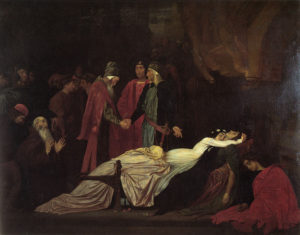
“The Reconciliation of the Montagues and Capulets over the Dead Bodies of Romeo and Juliet”, 1855, oil on canvas painting by Frederic Leighton
One of the central themes of Romeo & Juliet is passion, which manifests equally in love and in violence. Both are powerful and conflicting forces throughout the story, but ultimately, it’s love that conquers hate. To prove this point, compare the deaths of Romeo and Juliet to those of Mercutio and Tybalt. The latter pair engage in a heated duel and both end up suffering violent deaths brought on by anger and hatred; as a result, tensions between the Capulets and Montagues escalate and the feud only gets worse. In contrast, Romeo and Juliet, each the only child and last descendant of their respective families, willingly take their own lives in a final desperate act to escape the violent cycle keeping them apart and be united for eternity. Only then do Montague and Capulet realize their mistakes and make amends, for while they could easily blame Mercutio and Tybalt’s deaths on their enemies, they have no one to blame for Romeo and Juliet’s deaths but themselves.
Romeo & Juliet is one of the greatest love stories ever written, with strong lessons of romance that live on to this day. Whether proving that hatred kills or that love is the most powerful force in the world, Shakespeare’s classic play is a testament to the enduring passions of humanity, and it will always be my favorite story as much for the above lessons as for its ultimate message: life is fleeting, but love is forever.
What about you? What lessons do you think can be learned from Romeo & Juliet? What has this classic story taught you about love?
by Naomi L. | August 24, 2016 | Blog, Creative Writing, Featured |
No Man’s Sky came out this month, ending a three-year wait for the biggest space exploration game ever made. Published by indie studio Hello Games for PlayStation and PC, the game is set in a massive open universe (read: 18 quintillion planets) that procedurally generates almost everything from star systems and planets to the alien lifeforms that occupy them. I haven’t played it myself yet, but I have been watching someone else play, and if nothing else, it’s definitely creative and makes for great artistic inspiration, in no small part for its representation of the endless possibilities in space.

So today, I’d like to dedicate this creative writing post to that someone special who keeps on inspiring me with his passion for space. There’s a lot of creative inspiration to be found out there in the Universe, so let’s explore! Enjoy!
Tales in the Sky
Since the time of ancient civilizations, human beings have been fascinated with the stars and the mysteries hidden among them. Early cultures associated celestial bodies with divine beings and used the study of the stars to understand the phenomena of Earth, making astronomy the oldest natural science in history. Constellations have been a big part of mythology and storytelling throughout much of history, while modern science continues to make a splash in nonfiction by unraveling the great mysteries of the Universe. Whether you’re an artist or a scientist, there’s always something exciting to find in the cosmos!

The twelve signs of the Zodiac
The stars have always inspired me with their mysterious beauty. Sometimes when I’m feeling starved for creative inspiration on a clear night, I like to look outside at the sky and get lost in daydreams (nightdreams?) about space and all the amazing things that could be waiting out there in the Universe. I’m fortunate to live in a suburban area where there’s a good view of the stars at night (not as perfect as in unpopulated deserts, of course, but much better than in big cities), so I’ve had many opportunities to enjoy open skies with countless stars and bright moons, which often make excellent inspiration for poetry. So beautiful!
Stargazing is extremely relaxing, and an excellent practice for artists who either need inspiration to overcome a creative block or simply want to unwind after a busy and tiring day. If you’re lucky enough to live in an area without too much light pollution, I recommend taking the occasional break in the evening just to gaze up at the night sky. You may find it’s exactly what you need to spark your creativity!
“To Infinity and Beyond” / “It Came From Outer Space”
Mention “science fiction” and the first images that come to mind are usually alien lifeforms, spaceships, distant planets, and intergalactic exploration. With its continuing popularity from the old Star Trek series to the new Star Wars films and beyond, outer space often seems to be the poster child of the genre, and it remains one of the most well-known themes of science fiction today.
Science fiction is one of my favorite genres, and some of my favorite sci-fi stories use space travel as a major theme. Films like Interstellar and The Martian fascinated me with their use of real science to tell amazing stories, while The Force Awakens blew me away with its creative and exciting contributions to a classic sci-fi saga. A couple of the reasons I love science fiction are its infinite possibilities and its power to reconcile science and art, and some of the best examples of science fiction stories encompassing both these points are the ones with themes related to outer space.
Naturally, space-themed stories don’t always have to involve traveling outside Earth; sometimes it’s fun to imagine what would happen if space came to us instead. Alien invasions are another popular theme and often come up in lists of science fiction writing prompts. Outer space also contains plenty of dangers that could threaten life on Earth, making it a great source of inspiration for apocalyptic and post-apocalyptic fiction as well. There’s no end to the strange things that could come from outer space; the only limit is the imagination!
With all the writing ideas it provides, it’s no surprise that space is such a popular theme in science fiction. After all, why limit your stories to Earth when there’s an entire universe out there to explore?
Exploration Beyond Earth
Circling back to the introductory topic, I’ve been watching my boyfriend play a lot of No Man’s Sky lately, and I have to say it’s been quite an interesting journey so far. Mixed reviews aside (because of course there was “too much hype” around it), the game does offer a relaxing atmosphere in which creative introverts like my boyfriend and me could easily get lost for hours. We’ve enjoyed discovering different kinds of planets and especially naming the strange creatures we find together, which has turned out to be a great exercise for me as a sci-fi/fantasy writer. Maybe I’ll even use some of those alien names for a future novel!
While it may not be everything it supposedly promised to be, my impression is that part of the appeal of a game like No Man’s Sky must come from a fascination with space in general and its infinite potential stories. These don’t have to be entirely fictional, of course; another game my boyfriend loves is Elite: Dangerous, a space exploration game which, despite being set over a thousand years in the future, is heavily based on the real Milky Way galaxy, even containing a handful of real star systems alongside the procedurally generated ones. He loves how relaxing it is to explore deep space alone, and in a 1:1 scale open world galaxy, he’ll never run out of space to discover!

Elite: Dangerous screenshot taken by my boyfriend
From constellation mythology to science fiction to astronomy, space is full of inspiration for creative writing. Whether you’re a poet seeking that perfect verse in the stars or a speculative fiction writer doing research for your new novel, your next spark of creativity could be waiting for you among the stars. So the next time you find yourself at a creative block, why not take a break to explore the stories in the Universe? It’s the only other source of inspiration as infinite and boundless as the human imagination!
What about you? How do you find creative inspiration in space? Have you ever incorporated elements of space in your writing?
by Naomi L. | July 27, 2016 | Blog, Creative Writing, Featured |
If you read my recent post about the progress on my 2016 reading goals, you may have noticed I’ve been reading a lot of period fiction this year, and it’s really been inspiring my fascination with history! I love reading stories set in the past for much the same reason I enjoy science fiction and fantasy: they show me a world I could never see or experience for myself. And what more could you want from a fiction genre?
So continuing through my “five reasons” series, here’s a list of five reasons I love historical fiction. Enjoy!
1) It offers a deeper insight into human history.
History is fascinating, but there’s only so much we can learn from textbooks and history lessons in school. It’s one thing to read facts about past events, it’s another to live them. And while living said events ourselves would only be possible with a time machine, we can at least get a taste of what they were like through the immersive experience of narrative. Action, emotion, drama, all the things that make us human have the power to make a historical account much more engaging and relatable. That’s why I feel like I learn more about history from certain fiction books than I ever did from history lessons growing up: you can only really understand the driving forces behind human history when you feel like you’re reading about, you know, actual humans!
2) It shows the evolution of human behavior.
Reading many works of historical fiction set in various time periods gives readers the opportunity to observe how human behavior has changed over the centuries. What ancient civilizations once believed to be the work of the gods, we now approach as topics of science, and several subjects that seem commonplace to us today were once considered too shocking and scandalous to even be mentioned in proper society. Human beings drastically alter their ways of thinking over generations, so indulging in historical fiction offers an entertaining means of seeing those changes: through a narrative timeline!
3) It reveals the most consistent traits of human nature throughout time.
On the other hand, historical fiction can also show us the things that haven’t changed over time. After all, no matter how far we’ve come as a species since the dawn of mankind, human beings technically still are and always have been animals. There’s a reason history tends to repeat itself, and many authors like to explore the most consistent patterns of society by implementing elements of past events into present- and future-setting stories. This is where historical fiction ties in with many futuristic works: the most fundamental human traits – love, fear, survival instinct, social bonds, etc. – often become the driving forces behind major events like war and revolution, regardless of generation or time period, past or future. And speaking of the future…
4) It helps predict the future course of human history.
It may seem odd at first to think knowing the past is the key to predicting the future, but my dad always taught me that it’s important to study history because only by understanding humanity’s past mistakes can we hope to avoid repeating them. When you have a clear picture of the direction in which the human race has been heading for the past few millennia, it becomes easier to predict which areas we’ll progress in and which patterns we’ll keep falling into. And as mentioned above, this often makes for great futuristic fiction material. For example, technology continues to improve at an accelerated rate, but there will always be people who try to use it for the wrong reasons. If history really does repeat itself, then the one thing you can expect with absolute certainty from future generations is that they’ll keep making the same mistakes their ancestors did for thousands of years!
5) It makes for entertaining reading!
This is just my opinion, of course, but there’s something vastly entertaining about diving into a book set in a past time period. It’s like stepping into a time machine and being transported back to days when people acted and thought differently, technology wasn’t quite as advanced, and society had expectations that would greatly contrast with our modern-day views. I especially enjoy historical literature that was written during the time period in which it takes place, as it offers the additional insight of authors who experienced those times firsthand. To be able to see the past through the eyes of people who lived it is what makes historical fiction such a unique and fascinating genre!
What about you? Do you enjoy historical fiction? What do (or don’t) you like about it?
 Hands down, Hermione Granger is my favorite female character ever written. Growing up reading all seven Harry Potter books, I witnessed this beloved character’s transformation from a naïve know-it-all girl to a brave and intelligent young woman. I always admired Hermione for how much she loved reading, and even more so for how skillful she was at applying her knowledge to real-world situations. Her brains and dedication to her studies may have qualified her for Ravenclaw, but her courage and determination prove she was always a Gryffindor at heart! And let’s be honest: this girl was the real hero of the story all along. Do you think Harry and his friends could have accomplished as much as they did throughout the series if Hermione didn’t read so much? It just goes to show: never underestimate the value of intelligence and a good education, because they’re the most powerful tools to save the world!
Hands down, Hermione Granger is my favorite female character ever written. Growing up reading all seven Harry Potter books, I witnessed this beloved character’s transformation from a naïve know-it-all girl to a brave and intelligent young woman. I always admired Hermione for how much she loved reading, and even more so for how skillful she was at applying her knowledge to real-world situations. Her brains and dedication to her studies may have qualified her for Ravenclaw, but her courage and determination prove she was always a Gryffindor at heart! And let’s be honest: this girl was the real hero of the story all along. Do you think Harry and his friends could have accomplished as much as they did throughout the series if Hermione didn’t read so much? It just goes to show: never underestimate the value of intelligence and a good education, because they’re the most powerful tools to save the world! After finally reading Pride and Prejudice for the first time last year, I can honestly say it’s one of the best books I’ve ever read, thanks in no small part to the fascinating complexity of its female protagonist. Elizabeth Bennet is a remarkable character who, like the author who created her, could easily be seen as very much ahead of her time. While many of the women around her are inclined to marry for convenience (her best friend included), Elizabeth is determined to marry for love. She is clever and quick-witted in conversation without compromising her integrity to impress anyone, which wins her the favor of her proud-yet-good-natured soulmate, Mr. Darcy. Lizzy is observant enough to make quick analyses of people’s characters, yet ultimately proves her real intelligence by overcoming the prejudice that almost costs her true love and a lifetime of happiness.
After finally reading Pride and Prejudice for the first time last year, I can honestly say it’s one of the best books I’ve ever read, thanks in no small part to the fascinating complexity of its female protagonist. Elizabeth Bennet is a remarkable character who, like the author who created her, could easily be seen as very much ahead of her time. While many of the women around her are inclined to marry for convenience (her best friend included), Elizabeth is determined to marry for love. She is clever and quick-witted in conversation without compromising her integrity to impress anyone, which wins her the favor of her proud-yet-good-natured soulmate, Mr. Darcy. Lizzy is observant enough to make quick analyses of people’s characters, yet ultimately proves her real intelligence by overcoming the prejudice that almost costs her true love and a lifetime of happiness. This may seem a strange choice to some, but hear me out. First of all, no, I am not condoning teen suicide nor the total abandonment of family in favor of romance. I know Romeo and Juliet are often criticized as a couple of stupid kids who get six people killed in four days (which is so untrue it’s not even funny), but I’m not trying to praise their totally normal recklessness or their totally justified attempts to break out of a broken system. No, what I really find so admirable about Juliet is her determination to take control of her life in the face of an overbearing patriarchal society.
This may seem a strange choice to some, but hear me out. First of all, no, I am not condoning teen suicide nor the total abandonment of family in favor of romance. I know Romeo and Juliet are often criticized as a couple of stupid kids who get six people killed in four days (which is so untrue it’s not even funny), but I’m not trying to praise their totally normal recklessness or their totally justified attempts to break out of a broken system. No, what I really find so admirable about Juliet is her determination to take control of her life in the face of an overbearing patriarchal society.
 Another book I finally got around to reading last year is Little Women, a recommendation from my mother that I absolutely loved. She told me going in that I would strongly identify with Jo, and being a tomboyish bookworm and writer, it didn’t take me long to see why.
Another book I finally got around to reading last year is Little Women, a recommendation from my mother that I absolutely loved. She told me going in that I would strongly identify with Jo, and being a tomboyish bookworm and writer, it didn’t take me long to see why. I’ve watched all four Hunger Games movies and recently finished reading the first book in the trilogy, and I have to say that I admired the story’s protagonist from start to finish. Forced to endure a lifetime of hardship and more than one battle to the death from the age of sixteen, Katniss Everdeen is an embodiment of strength, tenacity, and survivalist cunning, not to mention the lengths one will go to for the love of family. After losing her father to a mining accident and watching her mother fade away into depression, this girl took on the role of head of her household and sole provider for her family at the age of eleven and shouldered that responsibility through her entire teenage life. That’s not an easy feat for anyone, especially someone who has to survive two Hunger Games and a revolution along the way. Still, Katniss is a fighter all the way to the end of the story, and stands as a symbol for girls everywhere to never give up on defending what they believe in!
I’ve watched all four Hunger Games movies and recently finished reading the first book in the trilogy, and I have to say that I admired the story’s protagonist from start to finish. Forced to endure a lifetime of hardship and more than one battle to the death from the age of sixteen, Katniss Everdeen is an embodiment of strength, tenacity, and survivalist cunning, not to mention the lengths one will go to for the love of family. After losing her father to a mining accident and watching her mother fade away into depression, this girl took on the role of head of her household and sole provider for her family at the age of eleven and shouldered that responsibility through her entire teenage life. That’s not an easy feat for anyone, especially someone who has to survive two Hunger Games and a revolution along the way. Still, Katniss is a fighter all the way to the end of the story, and stands as a symbol for girls everywhere to never give up on defending what they believe in! Heck yeah, I’ll say it: I loved Mad Max: Fury Road! Who didn’t, right? Remember how everyone was gushing about it two years ago and it took home six Academy Awards out of ten nominations? It’s already a great movie for its incredible action sequences and wildly thrilling screenplay, but what really made the story so enjoyable for me was the sheer awesomeness of its main character, Imperator Furiosa.
Heck yeah, I’ll say it: I loved Mad Max: Fury Road! Who didn’t, right? Remember how everyone was gushing about it two years ago and it took home six Academy Awards out of ten nominations? It’s already a great movie for its incredible action sequences and wildly thrilling screenplay, but what really made the story so enjoyable for me was the sheer awesomeness of its main character, Imperator Furiosa.

 There’s nothing like exaggeration to get a point across. Who among us hasn’t shared our experiences of “the greatest thing ever”, “the worst day in history”, or “the most fun I’ve ever had in my entire life”? Hyperbole is a common device for creating emphasis, as exaggeration tends to have a great impact on an audience’s perceptions of a given description.
There’s nothing like exaggeration to get a point across. Who among us hasn’t shared our experiences of “the greatest thing ever”, “the worst day in history”, or “the most fun I’ve ever had in my entire life”? Hyperbole is a common device for creating emphasis, as exaggeration tends to have a great impact on an audience’s perceptions of a given description.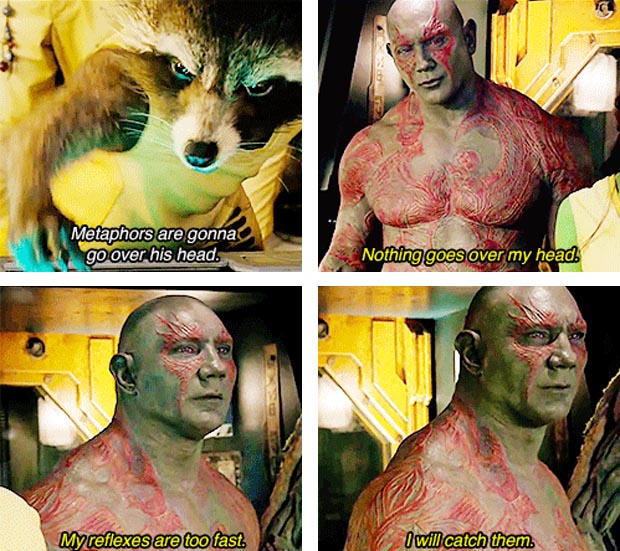

 This one was
This one was 













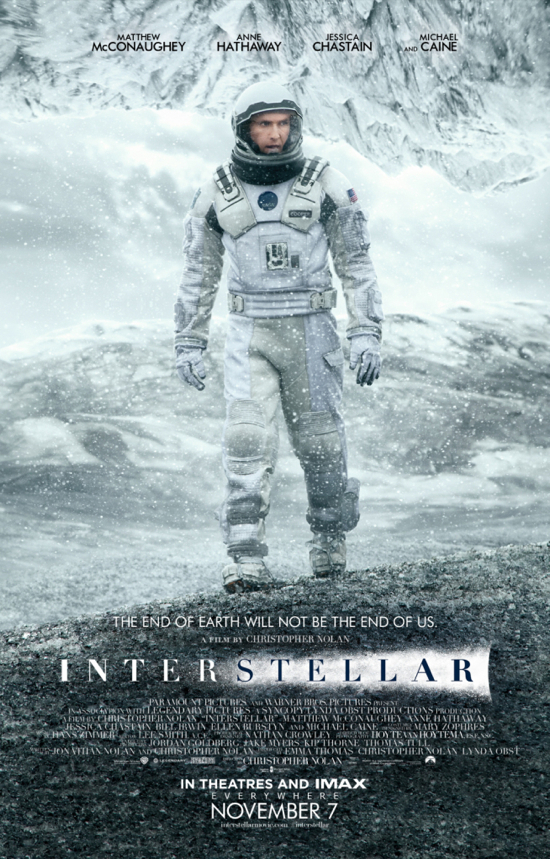

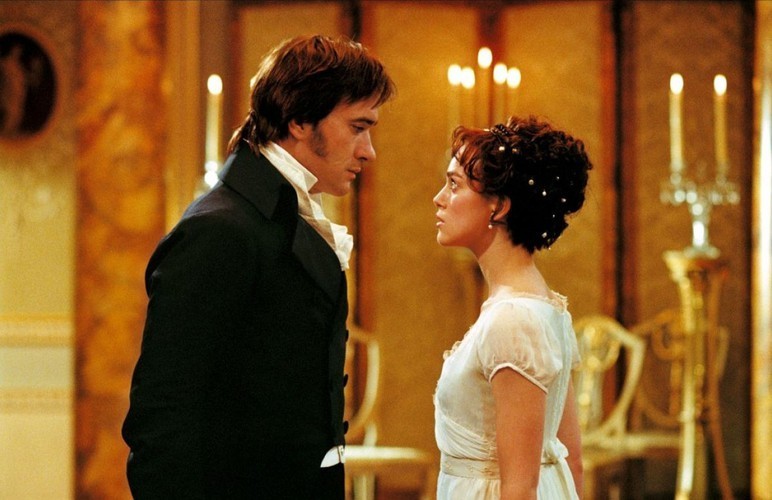
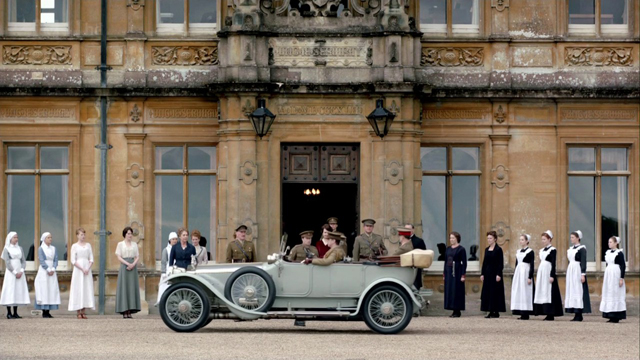

Recent Comments